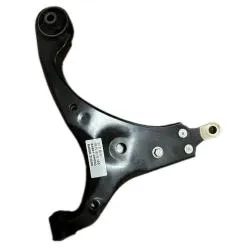
-
 Afrikaans
Afrikaans -
 Albanian
Albanian -
 Amharic
Amharic -
 Arabic
Arabic -
 Armenian
Armenian -
 Azerbaijani
Azerbaijani -
 Basque
Basque -
 Belarusian
Belarusian -
 Bengali
Bengali -
 Bosnian
Bosnian -
 Bulgarian
Bulgarian -
 Catalan
Catalan -
 Cebuano
Cebuano -
 Corsican
Corsican -
 Croatian
Croatian -
 Czech
Czech -
 Danish
Danish -
 Dutch
Dutch -
 English
English -
 Esperanto
Esperanto -
 Estonian
Estonian -
 Finnish
Finnish -
 French
French -
 Frisian
Frisian -
 Galician
Galician -
 Georgian
Georgian -
 German
German -
 Greek
Greek -
 Gujarati
Gujarati -
 Haitian Creole
Haitian Creole -
 hausa
hausa -
 hawaiian
hawaiian -
 Hebrew
Hebrew -
 Hindi
Hindi -
 Miao
Miao -
 Hungarian
Hungarian -
 Icelandic
Icelandic -
 igbo
igbo -
 Indonesian
Indonesian -
 irish
irish -
 Italian
Italian -
 Japanese
Japanese -
 Javanese
Javanese -
 Kannada
Kannada -
 kazakh
kazakh -
 Khmer
Khmer -
 Rwandese
Rwandese -
 Korean
Korean -
 Kurdish
Kurdish -
 Kyrgyz
Kyrgyz -
 Lao
Lao -
 Latin
Latin -
 Latvian
Latvian -
 Lithuanian
Lithuanian -
 Luxembourgish
Luxembourgish -
 Macedonian
Macedonian -
 Malgashi
Malgashi -
 Malay
Malay -
 Malayalam
Malayalam -
 Maltese
Maltese -
 Maori
Maori -
 Marathi
Marathi -
 Mongolian
Mongolian -
 Myanmar
Myanmar -
 Nepali
Nepali -
 Norwegian
Norwegian -
 Norwegian
Norwegian -
 Occitan
Occitan -
 Pashto
Pashto -
 Persian
Persian -
 Polish
Polish -
 Portuguese
Portuguese -
 Punjabi
Punjabi -
 Romanian
Romanian -
 Russian
Russian -
 Samoan
Samoan -
 Scottish Gaelic
Scottish Gaelic -
 Serbian
Serbian -
 Sesotho
Sesotho -
 Shona
Shona -
 Sindhi
Sindhi -
 Sinhala
Sinhala -
 Slovak
Slovak -
 Slovenian
Slovenian -
 Somali
Somali -
 Spanish
Spanish -
 Sundanese
Sundanese -
 Swahili
Swahili -
 Swedish
Swedish -
 Tagalog
Tagalog -
 Tajik
Tajik -
 Tamil
Tamil -
 Tatar
Tatar -
 Telugu
Telugu -
 Thai
Thai -
 Turkish
Turkish -
 Turkmen
Turkmen -
 Ukrainian
Ukrainian -
 Urdu
Urdu -
 Uighur
Uighur -
 Uzbek
Uzbek -
 Vietnamese
Vietnamese -
 Welsh
Welsh -
 Bantu
Bantu -
 Yiddish
Yiddish -
 Yoruba
Yoruba -
 Zulu
Zulu
Design and Analysis of Rearward Control Arm for Front Lower Suspension System
Understanding Front Lower Rearward Control Arm Function, Importance, and Applications
The front lower rearward control arm is a vital component in modern automotive suspension systems, playing a crucial role in vehicle handling, stability, and ride comfort. This article discusses the function, significance, and application of the front lower rearward control arm.
What is a Control Arm?
A control arm is a type of suspension link that connect the vehicle's chassis to its wheels. It is designed to allow vertical motion of the wheel while maintaining proper alignment with the vehicle’s body. There are typically two control arms in each wheel the upper and lower. The front lower rearward control arm specifically refers to the lower control arm position at the front of the vehicle.
Design and Structure
The design of front lower rearward control arms varies depending on the vehicle model and manufacturer. However, they usually consist of a robust metal frame that is both lightweight and strong. The arm is typically characterized by its rearward angle in relation to the vehicle's frame, which provides optimal control during cornering and braking. Structural reinforcements, such as gussets and bends, are often integrated into the design to enhance strength and durability.
Functions of the Front Lower Rearward Control Arm
1. Wheel Alignment The primary function of the front lower rearward control arm is to maintain proper wheel alignment. This ensures that the tires are in contact with the road surface at the correct angle, which is vital for vehicle stability and tire longevity.
2. Suspension Travel The control arm allows for the upward and downward movement of the wheel as the vehicle navigates over bumps and uneven terrain. This movement is crucial for maintaining ride comfort and minimizing the transfer of shock to the vehicle’s occupants.
3. Load Distribution During acceleration, braking, or cornering, forces are exerted on the vehicle. The front lower rearward control arm helps distribute these forces evenly across the suspension system, preventing undue stress on other components and reducing the risk of failure.
front lower rearward control arm

4. Handling and Traction A well-designed control arm improves the handling characteristics of a vehicle. By allowing the wheel to maintain optimal contact with the road during turns, it enhances traction and reduces body roll, which contributes to a safer and more enjoyable driving experience.
Importance in Vehicle Dynamics
The importance of the front lower rearward control arm cannot be overstated. A malfunctioning or damaged control arm can lead to a range of issues, including poor handling, uneven tire wear, and compromised safety. This component is essential for maintaining the vehicle’s alignment, which directly affects steering responsiveness and stability.
Additionally, the rearward orientation of the control arm helps in reducing excessive camber changes during suspension travel. This is particularly important in high-performance cars where handling and responsiveness are critical.
Applications in Automotive Industry
Front lower rearward control arms are commonly used in various types of vehicles, including passenger cars, SUVs, and performance vehicles. The automotive industry continuously seeks ways to improve the performance and efficiency of control arms. Innovations such as the use of advanced materials (like aluminum and composites) and improved manufacturing processes contribute to lighter and stronger components.
Moreover, custom control arms are often used in modified vehicles, particularly in motorsports. These aftermarket solutions are designed to enhance performance by adjusting suspension geometry to suit specific driving styles and conditions.
Conclusion
In summary, the front lower rearward control arm is a crucial component of the automotive suspension system that significantly affects vehicle performance, safety, and comfort. Understanding its functions and importance allows vehicle owners to appreciate the intricate engineering that goes into modern vehicles. Regular maintenance and timely replacement of worn control arms ensure that vehicles remain safe, responsive, and enjoyable to drive. As technology evolves, the future of control arms promises even greater improvements in performance and efficiency, making them a fundamental aspect of automotive engineering.







